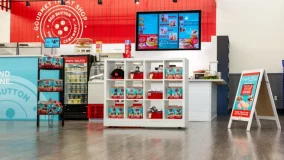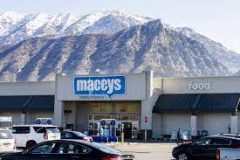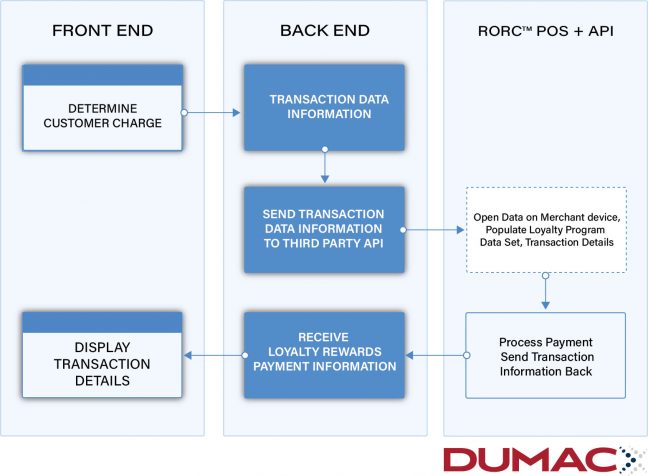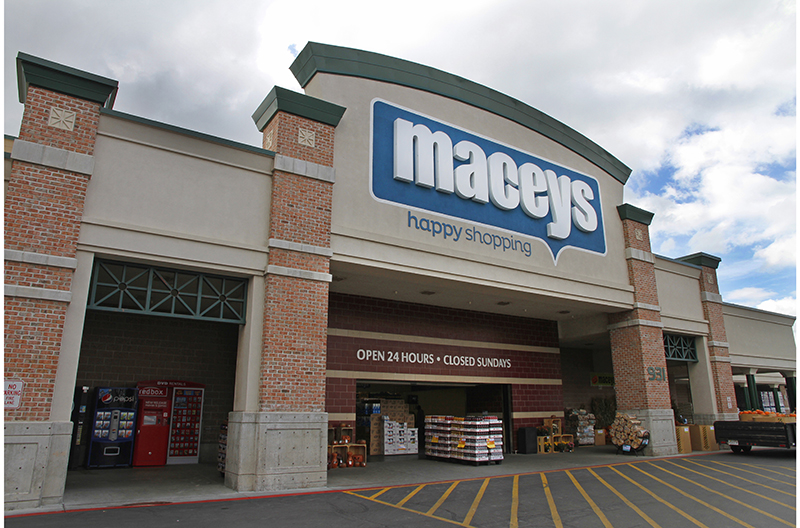Sponsored Content
![]()
The economic swings, supply chain disruptions, labor challenges and now, inflation and the issue of recession. Americans are struggling with the daily surges in fuel prices, rising food costs and the ominous news on repeat from the Fed, banks and experts of a possible recession.
Constant worries of staying healthy and not catching COVID are now replaced with what is seemingly almost hourly bad news cycle and economic volatility: how to pay for our essentials, especially gas and groceries. Americans’ frugality resurgence is evident. How can (we) re-budget and spend our money wisely?
The Essentials + Data
The need for groceries continues to be an essential part of our lives. According to recent research, more shoppers are pivoting back to in-store shopping – and more often with smaller basket sizes, but multiple return trips. As shoppers, we check prices frequently across multiple channels, stores and determine by data where to go for the best price and selections.
Loyalty and rewards are not new to retailers. But as competition is continually heating up to win the minds and hearts – and cash – of consumers independent grocers need to find ways to roll-out changes or even develop new programs – to offer loyalty rewards consistently and creatively.
Getting it right means having the right technology, the right data and the right approach to develop a creative loyalty rewards program. While we are embracing this wonderful digital transformation in all facets of our lives, the need for and expectation for humanization through personalization is a juxtaposition. And the more human your customers interactions feel, the more successful those interactions will be. For long-term customer engagement success, you must look to and beyond the data science of numbers. But first, you need to understand and use the data and to make loyalty reward programs work for your specific store location and your customers.
Point-of-Sale – Oft Forgotten the “Cash Register”
Often said, a retailer’s point-of-sale system IS considered the heart of their business. It collects store and shopper data, from payment to product to frequency. The POS system reports on back office, inventory, demand and supply chain needs, outages.
How robust is your system? Is it a “closed” system?” Or is it open? Open to fully integrate with APIs that not only enhance experience but provide a competitive advantage for your store, your specific location? And by store – whether it is a single store, or one of your stores that is east coast vs west coast, or east side of town vs west side of town, or is only 15 minutes apart in the same town?
Leveraging this data “set” obtained from an open API ecosystem is what sets your store apart from big box or low-dollar competition. In these instances, it is paramount your location and omnichannel (in store and on-line, including SNAP/EBT/eWIC) satisfy your customers’ shopping expectations, experience and works to increase loyalty for your store location, and ultimately drive revenue.
Personalization and the Human Experience
In any economic environment, customers not only want, but expect catered digital experiences carried over to their local omnichannel purveyors. It is simply what we have all come to expect as consumers. Deploying a robust loyalty program based on customer data sets and preferences is a local retailer’s differentiator – not only by the ability to deliver the personalized experience, but the ability to supply product, price and scaling promotions.

RORC Reward API is the building block for retail digital transformation. Determining which Reward APIs to develop and what products to promote and services to engage requires a retailer with a digital mindset.
You don’t have to be a tech company to reap the benefits of the RORC Reward API, and the integration would particularly benefit small to midsize supermarket teams that may struggle to reach digital audiences through saturated and tightly controlled print and signage outlets, TV ad networks and e-commerce markets. The RORC Reward APIs would position them to offer products and promotions more easily through emerging platforms, as well as unbundle and re-bundle their core competencies into a digital brand.
Macey’s Customers Win With Perk Rewards
Companies that have been most successful with the RORC Reward APIs display common thinking patterns and practices. They promote local partnership. They reward repeat trips. They celebrate events with special pricing like BOGOF and bulk discounts.
Macey’s (maceys.com), an Associated Food Stores corporate owned grocery store and long-time partner of DUMAC’s, knows and deploys this through their tightly aligned, successful rewards program. Easy for the consumer to use and obtain but developed in the background. Based on the RORC software POS data sets and open RORC API integrations, Macey’s keeps customers coming back to their beautiful stores by offering multiple options and tiered loyalty programs; and of course, “winning” for both the store loyalty and consumer for rewards on grocery items, fuel/gas discounts and free items – like ice cream on your birthday (in-store experience; win-win).

Macey’s has used the RORC Reward API as a way of passing transaction and loyalty information to a third party and applying discounts or coupons to the transaction based on the third-party response. As changes are made to the virtual receipt (adding or subtracting items, subtotal, applying discounts, etc.), those changes are passed through the two-way interface to the third party. Typically, the third party returns data information to the lane in the form of an intercept message.
They make shopping fun!
Why (Open) API?
Open API can sometimes send shivers in retailers as we are straddle the world of digital transformation and the heightened digital privacy aspect. As a consumer of digital platforms daily, consider your favorite devices and programs and how many times you may add a program and feature to perform better and get what you want when you want it. The same holds true for deploying technology solutions within a retail environment. Leveraging Open API integrations – and under best, safe practices is paramount to creating the customer experience that will differentiate your store and keep customers coming back in all instances.

Open API Considerations and How-To with RORC POS
The best way to get started with the RORC Rewards API and when considering applying API thinking is to start small and iterate. Form a small, cross-functional team of business and technology specialists to analyze customer experiences. Use the RORC ecosystem to define target business models and external dependencies and identify digital opportunities – in the case of a loyalty program – rewards on brands, sale opportunities, and yes – gas.
Finally, use the unbundling way to define the API-enabled capabilities and infrastructure required to deliver innovative solutions. Measure, apply learning and repeat. This approach can allow the supermarket to innovate with low risk and low net cost. The investment required would be funding for the team, plus money for API-specific infrastructure. This could likely be found in existing digital marketing budgets. Spending can scale up in alignment with delivered sales revenue or margin improvements and protect the organization from making too big of a bet too soon.
Outlook: Old and New
Independent retailers can thrive if they embrace the digital transformation. This occurs with a unique store fulfillment: with highly targeted, personalized store and brand experiences supported by flexible, best-in-class technologies that can integrate seamlessly with each other and in real time.
Everyone is a Consumer
This is what our local independent grocers do for communities, this is how tech companies can help connect grocers directly with their community and their consumers. Observing and staying ahead of competition will always be a factor in maintaining customer loyalty. And customer expectations are driven by digital transformation – especially personalization.
Continuing to deliver on customer experience is even more important in this daily digital transformative environment of today- but coupled with the customer and human at heart. Being loyal to your customers is paramount and as important to your customers being loyal to you. One does not happen without the other. Independent grocers and convenience stores are the heart of our local communities. Each store’s size, technology needs, and budget are vastly different. Implementing the right-sized technology plan for each store ensures success now and into the future.
Our customers partner with DUMAC’s professional services team to help simplify store technology solutions, work through upgrades or changes, and identify investments based on the store’s requirements, technology budget and timeline while considering customer experience and expectations.
Point-of-Sale technology remains the backbone and IS the center of our customer’s business operations. Considerations for implementing technology services are unique, and it becomes critical for retailers to work with a trusted technology partner.
DUMAC works with customers to determine and deliver the best software and hardware solutions based on store size, volume and technology through ROI calculations and data-driven facts. Protecting consumer and store data collected by a store’s POS technology and network system is critical. Developing and deploying a proactive managed network program is a significant extension and technology solution for DUMAC to continue to provide the unsurpassed support and service levels our customer partners expect.
For more information, visit dumac.com.

